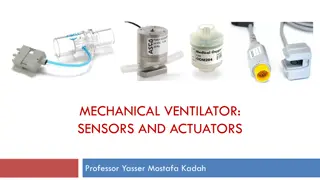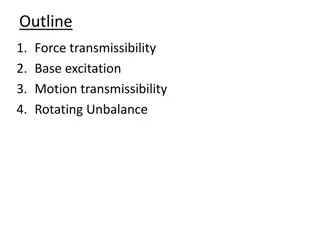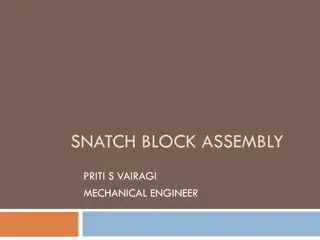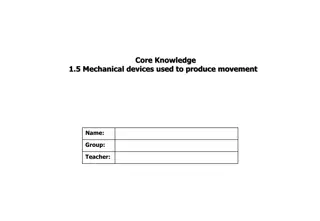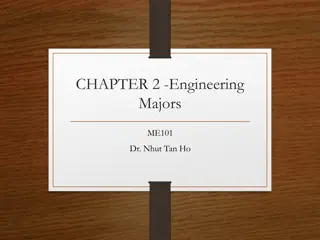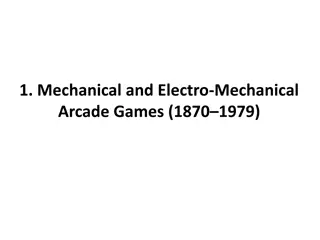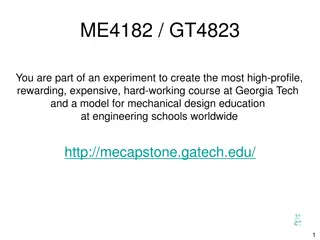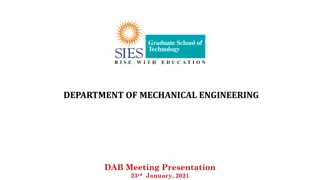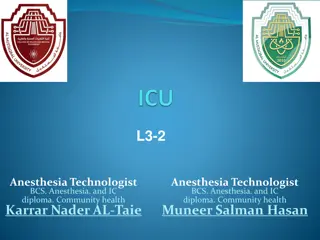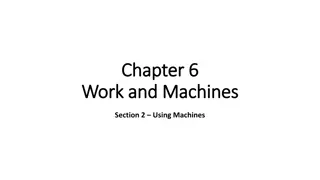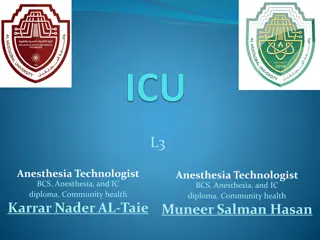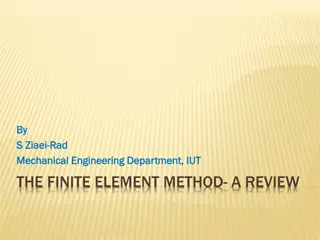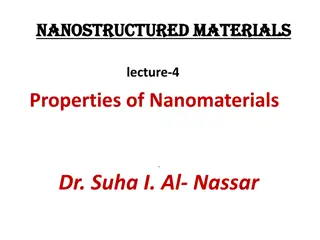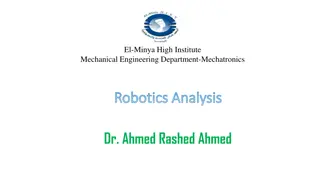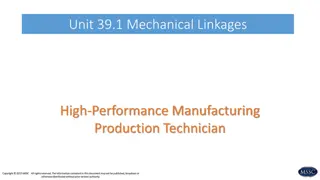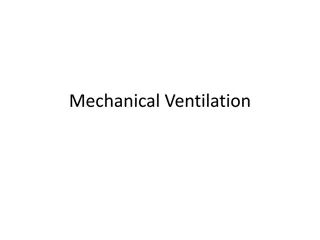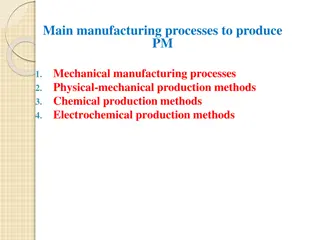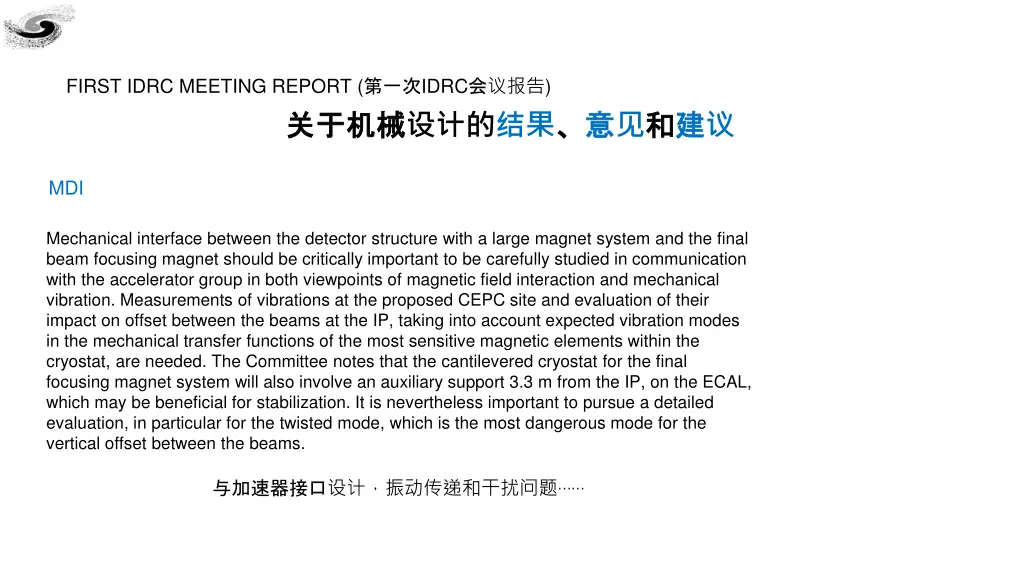
IDRC Meeting Report: Mechanical Integration and Tracking Challenges
Study findings on mechanical integration and tracking alignment for a large magnet system in the IDRC meeting report require careful evaluation for beam focusing and system stability. Key considerations include alignment between ITK and OTK, power consumption, and mechanical alignment for the TPC modules.
Download Presentation

Please find below an Image/Link to download the presentation.
The content on the website is provided AS IS for your information and personal use only. It may not be sold, licensed, or shared on other websites without obtaining consent from the author. If you encounter any issues during the download, it is possible that the publisher has removed the file from their server.
You are allowed to download the files provided on this website for personal or commercial use, subject to the condition that they are used lawfully. All files are the property of their respective owners.
The content on the website is provided AS IS for your information and personal use only. It may not be sold, licensed, or shared on other websites without obtaining consent from the author.
E N D
Presentation Transcript
FIRST IDRC MEETING REPORT (IDRC) MDI Mechanical interface between the detector structure with a large magnet system and the final beam focusing magnet should be critically important to be carefully studied in communication with the accelerator group in both viewpoints of magnetic field interaction and mechanical vibration. Measurements of vibrations at the proposed CEPC site and evaluation of their impact on offset between the beams at the IP, taking into account expected vibration modes in the mechanical transfer functions of the most sensitive magnetic elements within the cryostat, are needed. The Committee notes that the cantilevered cryostat for the final focusing magnet system will also involve an auxiliary support 3.3 m from the IP, on the ECAL, which may be beneficial for stabilization. It is nevertheless important to pursue a detailed evaluation, in particular for the twisted mode, which is the most dangerous mode for the vertical offset between the beams.
FIRST IDRC MEETING REPORT (IDRC) TRACKING Alignment between ITK and OTK: The relative alignment of the ITK and OTK has a significant impact on the global tracking precision. The simulation must in corporate realistic alignment tolerances and errors, reflecting expected mechanical installation uncertainties ITK OTK
FIRST IDRC MEETING REPORT (IDRC) TRACKING --- ITK and OTK The envisaged power consumption is 300 mW/cm2(ASIC) and requires active CO2cooling. The full coverage will require ~3500 wafers with 2 different sensor designs in the barrel and 21different detectors in endcaps (wedge-shaped). The purpose of the detector is to provide a TOF point for the tracks originating at the same vertex (PID) OTK
FIRST IDRC MEETING REPORT (IDRC) TRACKING --- TPC The mechanical alignment of the modules has to be excellent (a few tens of microns) to avoid systematics on the sagitta measurement. The electric and magnetic fields have to be precisely parallel to avoid ExB distortions. This calls for a very uniform magnetic field (see magnet section). TPC
FIRST IDRC MEETING REPORT (IDRC) MECHANICAL INTEGRATION Findings The study team presented the first ideas about the mechanical integration for the reference detector. In particular, they developed a concept for the installation sequence of the various detector elements and possible mitigation measures to compensate for the sagging of HCAL modules due to their self-weight (18.8mm), which is larger than the gap between HCAL and ECAL (10mm). HCAL
FIRST IDRC MEETING REPORT (IDRC) MECHANICAL INTEGRATION Comments Not much work has been done so far in terms of the integration of detector services. Beyond sufficient space to be foreseen in the detector for cables, fibers, cooling pipes and hoses, but the services also have an impact on the detector s performance through their material budget. 1. 2. Moreover, an estimate of the total power budget including power conversion efficiency and losses along the cables is necessary to correctly define the size of the power plants and of the services, and the impact of the services on the detector design ( )
FIRST IDRC MEETING REPORT (IDRC) MECHANICAL INTEGRATION Recommendations 1. Correctly size the service channels accounting for contingency. Space and material for services should also be duly considered in the simulations of the detector performance. 2. It would be important to define the considered cooling agents (air, water, CO2 etc.) for all sub-detectors, which doesn t seem to be the case yet. 1. 2. Further investigations going beyond the reference TDR will be needed at a later stage, including air cooling studies for the vertex detector to demonstrate the required cooling performance within the specifications in terms of vibrations. 1.

